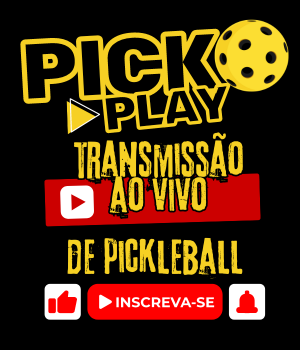
Introduction
The Spartus GT 1.0 Beta doesn’t just mark a milestone for its brand — it signals a shift in what foam-core paddles can be. From the first drive, it’s clear this is not a cautious experiment or a niche prototype. The GT arrives as a finished weapon— explosive, confident, and refined — with a level of polish rarely seen in any “beta” release.
Spartus, a young California-based engineering company, is aiming higher than incremental improvement. Its mission: rebuild pickleball paddle design from the inside out. The GT 1.0 Beta is the first public release born from Project Aurora, Spartus’s multi-year initiative to replace traditional honeycomb construction with a precision-engineered Fusion Foam™ core and a long-lasting PermaGrit™ face.
The result is a paddle that blends serious power, outrageous spin, and surprising control — the kind of all-court performance that could easily compete with top-tier models from legacy brands. While many paddles boast innovation, few actually deliver it in a way that changes how the game feels off the face. The GT does.
Whether you play aggressively from the baseline, counter at the kitchen, or rely on spin to shape every rally, the Spartus GT 1.0 Beta has the rare combination of raw pace, balance, and precision that makes it stand out in an increasingly crowded field. It’s not just impressive for a new company — it’s a genuine contender for paddle of the year.
Brand & Technology: Project Aurora and the Evolution of Spartus
The Brand
Spartus was founded by engineer-entrepreneur Josh Ng, who brought his background in mechanical design, law, and finance into the growing pickleball industry. Rather than chasing trends or color schemes, Spartus built its reputation on transparency and R&D updates — publishing development blogs, early-stage prototypes, and even community testing feedback long before product launch.
Their design philosophy leans on data-driven performance and materials innovation. Where many startups source generic paddles from overseas OEMs, Spartus has focused on U.S.-based manufacturing and proprietary components. The company emphasizes small-batch production, precision tolerances, and iterative testing — treating each paddle generation as an engineering prototype rather than a marketing campaign.
Spartus isn’t a marketing-first paddle brand. It’s a design lab — built by players, engineers, and materials specialists obsessed with how performance can evolve. Their development initiative began with a simple but bold question: what if the next leap in paddle design came from structure, not surface?
The Technology Vision: Project Aurora
In mid-2024, Spartus announced Project Aurora, its most ambitious R&D initiative yet. The goal was to move beyond traditional honeycomb-core construction — a structure used in almost every modern pickleball paddle — and develop a fully-foam paddle built and finished entirely in the United States.
Two major proprietary technologies were introduced under this program:
Fusion Foam™ Core — a fully solid yet lightweight internal structure replacing the traditional polypropylene honeycomb. The aim is to eliminate “core-crushing,” a common failure where honeycomb cells collapse over time, leading to dead spots and loss of pop. Fusion Foam is tuned for energy return and uniform rebound, creating a livelier, more consistent feel across the entire face.
PermaGrit™ Surface — a grit texture designed to stay rough for the life of the paddle, rather than sanding smooth after a few weeks of play. Spartus claims the material maintains spin generation while resisting delamination — a frequent problem in textured composite faces.
Project Aurora’s roadmap included multiple stages: early foam prototypes, a limited beta release (the GT 1.0 Beta), and future production runs (Aurora 1.1 and 2.0) expected to refine surface chemistry and foam density. Spartus made clear that the GT 1.0 Beta was both a consumer paddle and an R&D field test — a chance to gather data from real players before full-scale release.
For players, that makes the GT 1.0 Beta unique. It’s not just a paddle; it’s part of a live experiment in next-generation design.
A Look Back: Spartus’ Paddle Lineage
To understand the GT 1.0 Beta, it helps to see how Spartus has evolved over the last few years.
Apollo (2023) — The Apollo was Spartus’ first serious high-performance paddle. It used a Kevlar (Aramid) fiber face paired with a thermoformed honeycomb core. It delivered decent power, good spin, and exceptional control, but showed the same wear and “pop fade” that most honeycomb paddles eventually face. The Apollo gave Spartus early credibility and demonstrated that the company could build paddles with a distinctive feel and identity.
Odyssey APEX and Orion APEX (2024) — These models targeted beginners and intermediates. They introduced more accessible pricing and a wider range of shapes — hybrid, elongated, and widebody — to reach a broader player base. The APEX series served as Spartus’ value tier, giving players reliable performance without the higher cost of the Apollo.
Olympus (2024) — A power-oriented thermoformed paddle designed to compete with Selkirk’s Vanguard Power Air and CRBN’s Power series. It gained attention for its pop and clean build but also reinforced Spartus’ belief that the industry had reached the limits of honeycomb technology.
That realization directly inspired Project Aurora — and the GT 1.0 Beta became its proof-of-concept.
Design & Build Quality
The GT 1.0 Beta looks understated but feels premium in hand. The edge guard sits flush, the face texture is uniform, and the handle wrap is professional-grade. No buzzing seams, no visible adhesive overflow — details that separate engineered paddles from rebranded imports.
The handle (5.5 inches) accommodates two-handed backhands, and the very slight head-light balance makes it feel nimble at the net. The overall ergonomics lean modern without going to extremes — it’s elongated enough to give reach on volleys but still short enough to pivot quickly in firefights.
The surface texture — thanks to PermaGrit™ — feels abrasive, more like fine sandpaper than spray-on grit. It’s more aggressive to the touch than most carbon-fiber paddles, and it generates significant bite.
The key takeaway: the GT 1.0 Beta doesn’t feel like a Beta in the “rough prototype” sense. It feels like a near-production paddle built by a company that sweats details.
Weight, Feel & Balance
At 7.9 oz, the GT sits in the lightweight to midweight weight range. Spartus tuned the GT 1.0 Beta for what they call “predictable responsiveness.” The Fusion Foam core gives the paddle a slightly more muted and more solid impact than a hollow honeycomb — you feel the ball compress, not just bounce off.
The contact sound is clean, but not as low as other foamcore paddles. It produces more of a “clack” sound compared to others I have tried—akin to a Selkirk Boomstik. The feedback is firm but not harsh, and vibration is minimal. That’s particularly noticeable on off-center hits: instead of a jarring sting, the paddle stays stable and generally forgiving.
Feedback is good, but slightly dampened where players looking for the most elite feel of the ball on the paddle face may be searching. The GT’s handle, grip, balance, and weight all contribute to a pleasurable, natural swing.
Power, Control, and Spin
Power
Let’s make this clear: the GT 1.0 Beta is a power paddle — a serious one. Drives jump off the face with authority, yet remain generally predictable. The Fusion Foam™ core stores and releases energy smoothly, delivering power that’s accessible without being erratic. The energy return is excellent, but not completely linear. It may take some time to find the right dose of power to avoid hitting long. Drives and overheads carry real pace, yet the ball stays on the face long enough to aim accurately. It’s the kind of paddle that rewards full, confident swings rather than forcing you to muscle through contact.
Control
What makes the GT remarkable is that it doesn’t sacrifice control to achieve its power. From baseline to kitchen, placement feels intuitive. The sweet spot is both large and evenly responsive; slight mishits stay on target. Dinks, counters, blocks, drives, drips, and drops come off predictably. After several sessions, I am still trying to find the exact touch to make reliable resets under pressure, and lobs have been difficult to find the right depth consistently. If you rely on offensiveness or counter-punching, this paddle provides the feedback you need. There may be better options out there for defensive-minded players.
Spin
This is the GT 1.0 Beta’s defining characteristic, and the PermaGrit™ surface is the real star here. Spin production borders on outrageous. Topspin drives dive and kick off the bounce, and slices hold low and bite when they land. Side-spinning shots like a “banana” or “screwball” move like major league sliders. The ball simply obeys your intent. Importantly, Spartus claims that the texture is baked into the composite face, not applied as a coating — meaning it should resist smoothing over months of play. That claim will need time to prove out, but early impressions are encouraging.
Serve, Return & Third Shots
On serve, the GT 1.0 Beta feels balanced, solid, and repeatable. It’s easy to generate depth and heavy topspin without over-swinging. Returns come off the paddle cleanly with minimal vibration, and the extra reach of the elongated shape helps when on full-stretch. But again, it may take some time to find the inside of the baseline.
Third shot drops are consistent and intuitive–the power is linear with low to medium swings. Drives are powerful and have good precision. Hybrid drip shots are a potent weapon due to the incredible spin potential. You can feel the paddle cradle the ball slightly (and not quite as much as some other foam cores) before release, giving confidence in trajectory control. It’s the kind of feedback that breeds trust over time.
Net Play and Fast Exchanges
The slight head-light balance and lighter weight make the GT 1.0 Beta quick at the net. Reflex volleys, hand battles, and counter/blocks feel instinctive and benefit from the paddle’s maneuverability. There’s enough stiffness to redirect pace, but not so much rebound that you lose touch.
The GT feels light on its feet — both “explosive” and “surgical.” It rewards smart angles and fast hands.
Durability and Maintenance
Durability was a key goal of Project Aurora. By removing the honeycomb, Spartus eliminated the structural weak point that causes delamination and dead zones in many paddles. Early testers report consistent performance after weeks of heavy play, with no softening in the core or fading of the grit.
The face finish shows some normal wear, but it is purported to maintain texture far longer than typical sanded-surface paddles. The edge guard feels solid, and the grip (synthetic leather-style) maintains friction in the Florida humidity.
Because this is a Beta release, long-term data is still limited, but Spartus’ engineering direction is promising.
Who It’s For (Revised)
The Spartus GT 1.0 Beta is built for players who want to play offense without chaos — those who attack first, counter confidently, and expect their paddle to keep up. It’s a high-performance, power-oriented design with enough stability and touch to satisfy even the most control-conscious advanced player.
Ideal for:
Intermediate to advanced all-court players who want a true power paddle that still offers precision.
Players curious about foam-core technology who want the explosive power of a Boomstik or Vatic Pro but with a more connected, consistent feel.
Early adopters and gear testers who enjoy being part of a live R&D process — Spartus’s Project Aurora actively incorporates player feedback, making this paddle both a product and a collaboration.
Aggressive doubles players who thrive on drives, counterpunches, and hand battles.
In stock form, the GT offers a balanced blend of pop and maneuverability — but adding some perimeter weight may transform it into a singles weapon, giving it more head weight, plow-through, and spin leverage.
It’s less suited for brand-new players or those who struggle with overhitting — the GT has real pop, and it rewards commitment over caution. Likewise, if you prefer an ultra-soft, “cushioned” control paddle for resets and blocks, you might find the feedback sharper than expected until you adapt.
But for confident, aggressive players who want a paddle that drives through the ball, spins it hard, and finishes points with authority — the GT 1.0 Beta delivers in full.
Pros and Cons
Pros
Exceptional Spina potential
Both power and control
Large, even, forgiving sweet spot
Excellent comfort due to the handle/grip and Fusion Foam™ core
PermaGrit™ texture sustains spin longer
Clean, professional build — made in the USA
Represents real innovation in paddle design (not a clone)
Cons
Slightly muted feedback may feel too soft for some
Limited Beta availability and plain design
Long-term durability is still being evaluated
Price (projected ~$300 MSRP) may exceed casual budgets once in full release
12. Final Verdict (Revised)
The Spartus GT 1.0 Beta isn’t just an impressive debut — it’s a statement piece. This paddle announces Spartus as a legitimate force in the high-performance category, not a boutique experiment. The GT hits with authority — explosive off the face, clean through contact, and surprisingly stable on counterpunches. It’s one of those rare paddles that gives you real power without compromise, where you can drive, roll, and finish points without feeling you’ve lost control or touch.
Spin generation borders on outrageous — heavy topspin drives jump off the court, and slices stay low and biting. The Fusion Foam™ core and PermaGrit™ surface combine to create a paddle that’s both powerful and predictable, something few manufacturers have achieved. Despite its pop, the GT maintains a composed, linear response — so you can swing big and still trust the result.
Control and touch remain outstanding. Drops, resets, and dinks feel natural once you find rhythm; the feedback through the handle is crisp but never harsh. Unlike many power paddles that demand constant restraint, the GT rewards confident swings and aggressive play. It’s a paddle that invites you to attack — and backs you up when you do.
The GT 1.0 Beta may well be one of the best paddles of the year. It represents the first successful marriage of power, precision, and longevity in a fully foam-core design — all built in the U.S. under a transparent, engineering-led development process. If this is what Spartus can achieve with a Beta release, the production version could set a new bar for performance standards in 2025.
Score: 9.7 / 10
A dominant, spin-heavy power paddle with pro-level control and touch — a true breakthrough, not a prototype.
Anuncie Aqui / Advertise Here
Sua marca para o mundo Pickleball! / Your brand for the Pickleball world!

 English
English  Spanish
Spanish  Portuguese
Portuguese  German
German  Italian
Italian  Japanese
Japanese  French
French  Polish
Polish  Russian
Russian  Netherlands
Netherlands  Hungarian
Hungarian  Turkish
Turkish  Videos
Videos  Pickleball Portal
Pickleball Portal








 English (US) ·
English (US) ·  Portuguese (BR) ·
Portuguese (BR) ·